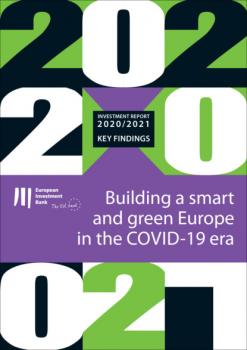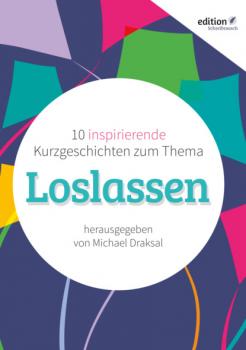Группа авторов
Список книг автора Группа авторовTEXT + KRITIK 228 - Gabriele Tergit
Vom Tanz auf dem Vulkan in den 1920er Jahren, von Flucht und Vertreibung und dem Leben im Exil erzählt Bestsellerautorin Gabriele Tergit. Sie war eine der ersten Gerichtsreporterinnen der Weimarer Republik, P.E.N.-Sekretärin, verfolgte Jüdin und Emigrantin. Gabriele Tergit (1894–1982) hat den Grenzbereich von Fakt und Fiktion ihrer Zeit vermessen: politisch, kulturell und historisch, dabei immer die Gesellschaft im Blick, in der sie lebte. Das Heft wirft ein Schlaglicht auf ihr von Brüchen und Zäsuren geprägtes Leben und zeigt die ganze Breite ihrer schriftstellerischen und publizistischen Produktion: von der Weimarer Republik über das Exil bis in die Nachkriegszeit. Neben einer unveröffentlichten Reportage aus dem «Palästina-Konvolut» präsentiert das Heft Beiträge, die u. a. Tergits Feuilletons und Reportagen der 1920er Jahre und ihren Debütroman «Käsebier erobert den Kurfürstendamm» in den Blick nehmen. Ergänzt durch Analysen, die sich anhand bisher weitgehend unbekannten Archivmaterials ihrer Fluchtroute und den facettenreichen im Exil entstandenen Arbeiten – auch im konfliktgeladenen Austausch mit Zeitgenossen – widmen.
EIB Investment Report 2020/2021 - Keyfindings
The Europe Union's massive efforts to rebuild after the coronavirus pandemic present a unique opportunity to transform its economy, making it more green and digital – and ultimately more competitive. The Investment Report 2020-2021 looks at the toll the pandemic took on European firms' investment and future plans, as well as their efforts to meet the demands of climate change and the digital revolution. The report's analysis is based on a unique set of databases and data from a survey of 12 500 firms conducted in the summer of 2020, in the midst of the COVID-19 crisis. While providing a snapshot of the heavy toll the pandemic took on some forms of investment, the report also offers hope by pointing out the economic areas in which Europe remains strong, such as technologies that combine green and digital innovation.This document presents a summary of the key findings of the EIB Investment Report 2020/2021.
Loslassen
Fällt es Dir schwer loszulassen?
Wie oft liest man in Motivationsratgebern, dass man durchhalten soll: «Gib niemals auf!» Dabei liegt manchmal gerade im Loslassen die wahre Stärke. Endlich losgelassen, eröffnen sich plötzlich völlig neue Perspektiven! Wie lange dürfen wir in einer belastenden Situation bleiben? Wie lange dürfen wir trauern? Wie lange dürfen wir uns im Kreis drehen und auf Besserung hoffen?
Dieser Sammelband stellt 10 inspirierende Kurzgeschichten vor, die einladen, über das Loslassen nachzudenken und den einen oder anderen Impuls für sich selbst mitzunehmen. Die Edition Schreibrausch veröffentlicht Texte, die im Flow geschrieben wurden. Einem rauschartigen Zustand, ein Glücksgefühl vollkommen im Hier und Jetzt. Das Gehirn arbeitet dabei 2- bis 5-mal produktiver und bis zu 9-mal kreativer als im Normalzustand. Komm auch Du in den Flow mit den mitreißenden Geschichten aus der Edition Schreibrausch.
Herausgeber Michael Draksal ist Sportwissenschaftler mit eigener Beratungspraxis und hat sich auf das Training des Flow-Zustandes spezialisiert. Das Spannende: Nicht nur Athleten profitieren von diesem Training, sondern auch Schriftsteller, denn Schreiben ist eine Leistung, die im Flow besser läuft. Alle Preisträger des Kurzgeschichten-Wettbewerbs 2020 der Edition Schreibrausch in diesem Buch!
Mit Schalke machse wat mit
'Mit Schalke machse wat mit' ist bereits der vierte Band in der erfolgreichen Reihe '1904 Geschichten'. Wieder hat Herausgeber Matthias Berghöfer Erinnerungen Schalker Fans gesammelt, und wieder ist eine kunterbunte Mischung von Fangeschichten aus den letzten 80 Jahren entstanden – quasi von der Glückauf-Kampfbahn über das Parkstadion bis zur Arena von heute. Da geht es um legendäre Ligaduelle ebenso wie um abenteuerliche Europapokalreisen quer über den Kontinent. Es wird gezittert um Eintrittskarten für entscheidende Spiele, und auch die Entstehung einer Schalker Institution wird erzählt: nämlich des 'Nordkurwenkommentars' im Vereinsmagazin 'Schalker Kreisel'. Wie in den ersten drei Bänden, so finden sich auch hier Geschichten aus allen Generationen und Milieus. Sie sind spannend oder lustig, auch mal traurig, manchmal kurios, dann wieder alltäglich – aber immer echt und menschlich, eben so wie Schalke.
Modelando el emprendimiento social en México
Este libro cuenta la historia y delimita los emprendimientos sociales en México. Cubre el marco legal desde una perspectiva estratégica. Explica la teoría y la práctica del liderazgo en las empresas sociales. Asimismo diagrama el ecosistema del emprendimiento social en México incluyendo estrategias, fortalezas y debilidades, desafíos e impacto. También realiza un mapeo de los emprendimientos sociales con fines de lucro. Hacia la parte final del libro habla de los retos que los emprendimientos sociales tienen hoy y con vista al futuro como lo son el financiamiento, consejos para emprendedores y la teoría para implementar estrategias de marketing y branding. Analiza diversos aspectos del emprendimiento social en México sobre el futuro de estas empresas.
Jakob Strauß und der reformatorische Wucherstreit
In der Reformationszeit spielt die Auseinandersetzung über den Zins und den Wucher eine bedeutsame Rolle. 1523 veröffentlichte der Eisenacher Reformator Jakob Strauß 51 Artikel gegen den Wucher, in denen er sich gegen überhöhte Zinsen auf Geld und Land ausspricht. Viele Bürger waren überschuldet, und Strauß versuchte, mit Hilfe dieser Artikel Gerechtigkeit zu schaffen. Für ihn ging es um die Frage, welches Handeln aus dem Glauben folgt. Strauß hat seine Artikel gegen den Wucher biblisch begründet. Vielleicht haben viele Menschen in Eisenach und Mitteldeutschland gerade deshalb so enthusiastisch auf die Botschaft der Reformatoren gehört, weil die geistliche Freiheit auch Befreiung aus weltlichen Zwängen verhieß. Das Buch beleuchtet die sozialethische Dimension der Reformation und ihrer Wirkung bis in die heutige Zeit.
[Jakob Strauss and the Reformation Usury Controversy. The Social Dimension of Reformation and Its Historical Effects] In the Reformation period the dispute over interest and usury played an important role. In the year 1523 the Eisenach Reformer Jakob Strauss published 51 articles against usury, in which he argued against excessive interest rates on money and land. Many citizens were overindebted and Strauss tried to create justice. For him the question was which actions would be the consequences of faith. In his articles against usury Strauss based his arguments on the bible. Maybe many people in Eisenach and Central Germany welcomed so enthusiastically the message of the reformers because spiritual freedom promised also a liberation from social constraints. The book sheds light on the social-ethical dimension of the Reformation and its historical effects up to the present day.
Hinführungen zu den Lesungen im Gottesdienst
Die biblischen Lesungen sind unverzichtbarer Bestandteil eines jeden Gottesdienstes. Gottes Wort regelmäßig zu hören, ist für jeden Christen wichtig. Denn der Mensch lebt nicht vom Brot allein. Dennoch ist das, was da gelesen und gehört wird, manchmal nicht leicht zugänglich. Es sind Worte aus uralter Zeit, die da in den alttestamentlichen Lesungen sowie den Epistel- und Evangeliumslesungen erklingen. Was haben uns diese Geschichten und Weissagungen, Gleichnisse und Ermahnungen im 21. Jahrhundert zu sagen? Das Buch bietet eine kurze Einführung zum sonntäglichen Proprium, also dem Thema des Sonntags mit seinen Lesungen und Wochenliedern. Darauf folgen die eigentlichen Hinführungen, die in einfacher Sprache eine Brücke vom Text in die Gegenwart schlagen.
The biblical readings are very essential elements of every Christian service. To listen to God's Word regularly is important for each Christian. Man shall not live by bread alone. But sometimes the old texts of the bible seem far away from our daily lives. The psalms, prophecies, miracles, stories and explications oft he Holy Scripture have an archaic sound, but how can they speak to us now? This book offers a short liturgical introduction to each Sunday an then short spots on the three main readings: Old Testament, Epistle and Gospel. They (these praefamina) bridge the biblical world to our world.
Operation Weserübung Nord: Die Invasion Norwegens
Die Invasion Norwegens durch Nazi-Deutschland, die sogenannte «Weserübung Nord», und der darauf folgende Versuch der Befreiung Norwegens durch die Alliierten fand vom 9. April bis zum 10. Juni 1940 statt. Der alliierte Feldzug blieb erfolglos und führte zur Flucht von König Haakon VII. und dem Rest der königlichen Familie nach Großbritannien. Im April kamen das Vereinigte Königreich und Frankreich Norwegen mit einer Auslandsstreitmacht zu Hilfe. Trotz mäßiger Erfolge in den nördlichen Teilen Norwegens wurden die Alliierten schließlich durch den deutschen Überfall auf Frankreich im Mai 1940 zum Rückzug gezwungen, und die norwegische Regierung suchte das Exil in London. Der Feldzug endete mit der Besetzung Norwegens durch Deutschland und den fortgesetzten Kämpfen der norwegischen Exilkräfte aus dem Ausland. Die 62 Tage des Kampfes machen Norwegen zu der Nation, die einer deutschen Landinvasion am zweitlängsten standgehalten hat (nach der Sowjetunion).
Judaism I
Judaism, the oldest of the Abrahamic religions, is one of the pillars of modern civilization. A collective of internationally renowned experts cooperated in a singular academic enterprise to portray Judaism from its transformation as a Temple cult to its broad contemporary varieties. In three volumes the long-running book series «Die Religionen der Menschheit» (Religions of Humanity) presents for the first time a complete and compelling view on Jewish life now and then – a fascinating portrait of the Jewish people with its ability to adapt itself to most different cultural settings, always maintaining its strong and unique identity. Volume I provides a global view on Jewish history from antiquity, the middle ages, to contemporary history.









